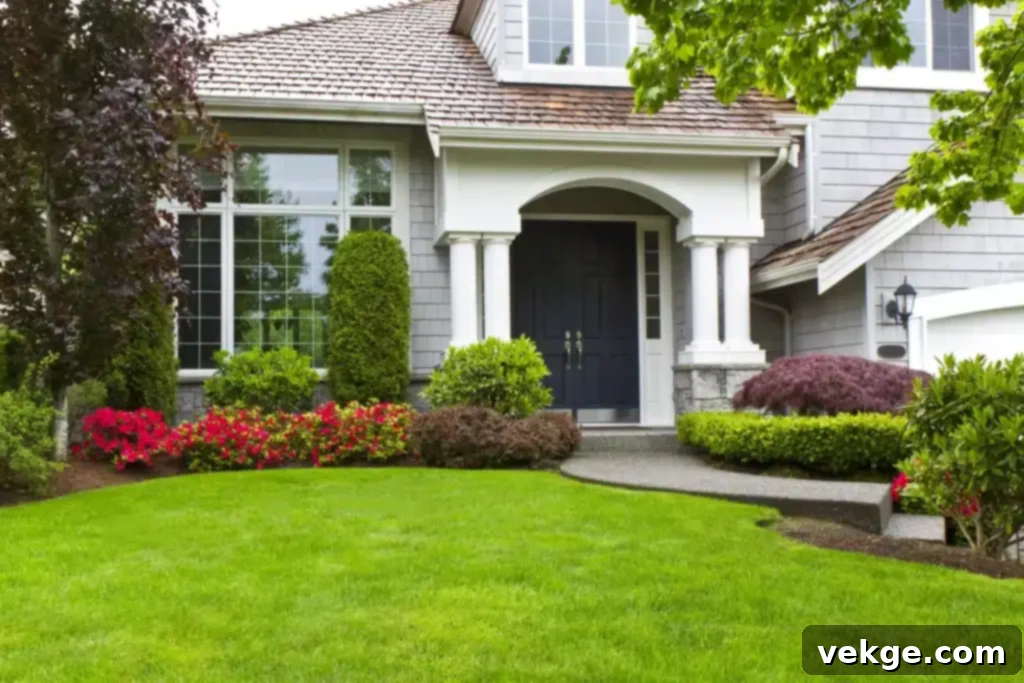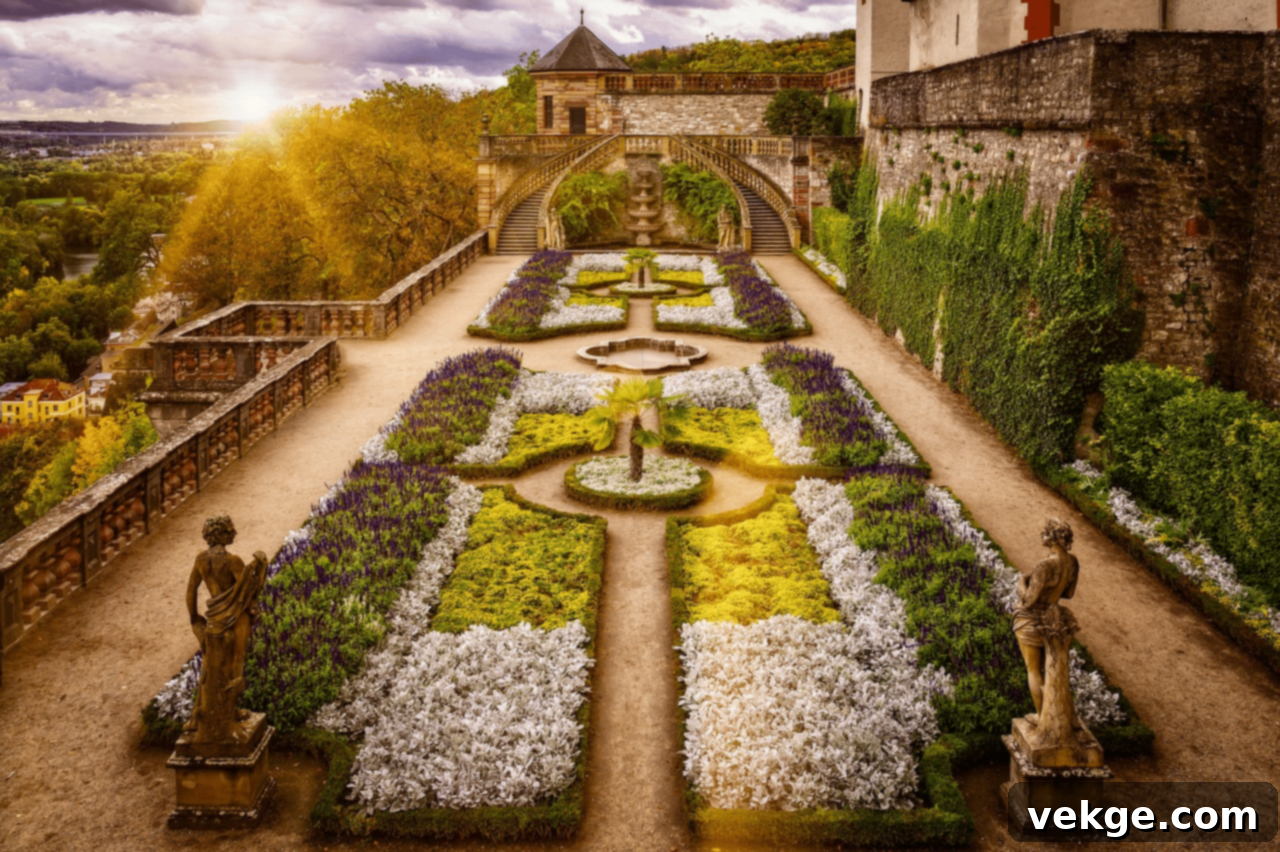Top 2024 Landscaping Trends: Sustainable Design, Smart Tech & Eco-Friendly Outdoor Spaces
The landscape of outdoor design is rapidly evolving in 2024, pushing beyond mere aesthetics to embrace profound shifts towards sustainability, smart technology, and enhanced functionality. Homeowners and commercial property managers alike are now seeking more than just beautiful gardens; they desire efficient, resilient, and intelligent outdoor environments that contribute positively to their lifestyle and the planet. This modern approach to landscaping transforms yards into dynamic extensions of our living spaces, integrated with cutting-edge solutions and environmentally conscious practices.
From the creation of self-sustaining ecosystems that support local wildlife to the deployment of AI-driven irrigation systems that drastically cut down water consumption, the demand for innovation in outdoor design is at an all-time high. If you’re looking to transform your outdoor space with the latest advancements and eco-conscious strategies, these are the leading trends poised to redefine our gardens and yards this year.
The Rise of Landscaping Design Software for Precision Planning

The days when landscape designers relied solely on hand-drawn sketches and rough blueprints are quickly becoming a relic of the past. In 2024, the utilization of advanced landscaping design software has become indispensable for both professional designers and ambitious homeowners. These sophisticated digital tools offer unparalleled precision, customization, and visualization capabilities that traditional methods simply cannot match.
Modern software platforms provide immersive 3D models of potential landscapes, allowing users to virtually explore every element – from plant selections and hardscape materials to lighting designs and water features – long before any physical work begins. This capability empowers users to visualize their dream outdoor space with incredible detail, enabling them to make informed decisions about garden layouts, material choices, and even complex irrigation and drainage paths. The ability to experiment digitally saves time, reduces costly errors, and ensures the final outcome perfectly aligns with the client’s vision.
Furthermore, contemporary landscaping design software often leverages Artificial Intelligence (AI) to enhance its functionality. This AI integration can suggest optimal plant choices based on various parameters such as regional climate zones, specific soil types, sun exposure, and maintenance requirements. This intelligent guidance ensures that the design is not just aesthetically pleasing but also practical, sustainable, and optimized for long-term health and minimal upkeep. For professionals, this means increased efficiency and better client communication, while homeowners gain confidence in creating a robust and beautiful outdoor environment.
Smart Irrigation Systems Powered by Advanced AI
Another pivotal trend shaping modern landscaping in 2024 is the widespread adoption of AI-driven smart irrigation systems. These intelligent setups represent a significant leap forward from traditional fixed-schedule timers, offering a dynamic and responsive approach to garden watering that conserves water and promotes healthier plant life.
Unlike conventional systems, AI-powered irrigation units continuously monitor a multitude of environmental factors. They collect real-time data on local weather patterns (including rainfall, temperature, and humidity forecasts), soil moisture levels using embedded sensors, and even specific plant health indicators. Based on this comprehensive data, the AI systems dynamically adjust watering schedules, durations, and intensity. This precision ensures that gardens receive precisely the right amount of water at the optimal time, eliminating guesswork and preventing common issues like overwatering or underwatering.
This level of dynamic adjustment and precision was simply not feasible with older timers or manual watering methods. The environmental benefits are substantial: by preventing unnecessary watering, these systems significantly reduce overall water consumption, mitigate runoff, and contribute to lower utility bills for homeowners. Many innovative irrigation systems seamlessly integrate with broader home automation platforms, allowing property owners to control and monitor their entire garden’s hydration from a smartphone app, tablet, or even via voice commands, offering unprecedented convenience and control.
Climate-Resilient Planting for Enduring Outdoor Spaces

As the frequency and intensity of unpredictable weather events continue to rise globally, homeowners are increasingly prioritizing climate-resilient landscaping. This critical trend focuses on selecting and arranging plants that can robustly withstand various extreme conditions, including prolonged droughts, torrential rains, and significant temperature fluctuations, ensuring the long-term viability and beauty of outdoor spaces.
Native plant species play an absolutely vital role in this movement. Because they have naturally adapted to local climates and ecosystems over millennia, native plants require less supplemental water, fertilizer, and pest control than non-native alternatives. This dramatically reduces the need for excessive irrigation or energy consumption, fostering a more sustainable and low-maintenance landscape. Beyond their resilience, native plants also provide essential habitat and food sources for local wildlife, supporting biodiversity and creating thriving local ecosystems right in your backyard.
Modern designers also strategically combine hardier perennials with various drought-tolerant grasses and shrubs to engineer sustainable landscapes that not only survive but truly thrive, even during extended dry seasons. This approach often includes designing rain gardens or bioswales that manage stormwater runoff during heavy rains, directing it to specific areas where it can naturally infiltrate the soil and nourish drought-tolerant plants. The goal is to build outdoor spaces that are not just visually appealing but are robust, self-sufficient, and capable of enduring the multifaceted challenges posed by ongoing climate change, providing lasting beauty and ecological benefits.
Edible Landscapes: Merging Beauty with Bountiful Harvests
In 2024, edible landscapes have surged in popularity, seamlessly blending aesthetic appeal with practical functionality. This trend integrates consumable plants such as herbs, vegetables, fruit trees, and berry bushes directly into ornamental garden designs, moving them from hidden patches to prominent features within the landscape.
Space constraints are no longer a barrier to cultivating a productive garden. Innovative techniques like vertical gardens, tiered planters, and raised garden beds allow homeowners to maximize yield even in the smallest yards, urban balconies, or patio spaces. Vertical gardening systems, for instance, can transform a blank wall into a lush tapestry of leafy greens, herbs, and strawberries, making fresh produce accessible within arm’s reach.
Beyond providing a constant supply of fresh, organic ingredients for daily cooking, edible landscapes significantly boost local biodiversity. They act as magnets for essential pollinators like bees, butterflies, and hummingbirds, crucial for a healthy ecosystem. This symbiotic relationship enhances both the garden’s sustainability efforts and its overall visual appeal, turning a simple yard into a vibrant, living larder that delights the senses and contributes to food security. It’s about creating a garden that not only looks good but also provides sustenance and supports nature.
Outdoor Living Rooms with Multi-Purpose, Adaptable Designs
The concept of an outdoor living room has evolved considerably, moving beyond a simple lounging area to become a versatile, multi-functional extension of the home. Homeowners are increasingly prioritizing these spaces for their adaptability, desiring areas that can fluidly transition from a serene dining spot to an vibrant entertainment hub, or even a tranquil work-from-home office, all within the fresh air of their backyard.
Designers are meeting this demand by incorporating elements like retractable pergolas, large umbrellas, and durable, weather-resistant furniture that can withstand various climatic conditions and offer flexible arrangements. Materials such as high-quality composite decking, polished concrete, and natural stone are favored for their longevity and ability to create a seamless, elegant transition between indoor and outdoor environments. This continuity blurs the lines between interior and exterior, making the outdoor room feel like an integral part of the home.
To further enhance usability and sustainability, modern outdoor spaces frequently include energy-efficient features. Solar-powered lighting systems illuminate evenings without relying on the grid, while sophisticated outdoor kitchens with energy-efficient appliances make al fresco dining a breeze. Features like integrated fire pits, outdoor heating lamps, and even misters extend the usability of these areas, ensuring they remain comfortable and enjoyable throughout cooler evenings or warmer months, maximizing their value and enjoyment potential year-round.
Eco-Friendly Hardscaping Utilizing Recycled and Sustainable Materials
Sustainability has become a paramount consideration across all aspects of home design, and hardscaping is certainly no exception. In 2024, there’s a significant movement towards incorporating eco-friendly materials into landscape structures, with reclaimed wood, recycled stone, and repurposed bricks making a considerable impact in home and commercial outdoor projects.
The strategic use of environmentally friendly materials dramatically reduces the demand for newly sourced resources, thereby lowering the carbon footprint associated with construction and minimizing waste sent to landfills. Beyond recycled components, homeowners are also increasingly opting for permeable pavers and gravel pathways. These materials are engineered to allow rainwater to filter naturally into the ground below, rather than generating harmful surface runoff that can lead to erosion and pollution. This approach actively contributes to better stormwater management and groundwater recharge, supporting healthier local ecosystems.
For added functionality and a touch of unique character, recycled concrete can be creatively repurposed into robust garden walls, distinctive pathways, or even custom outdoor seating. This trend ensures that even the most rigid and structural elements of a landscape work in harmonious concert with nature, creating spaces that are not only durable and aesthetically pleasing but also profoundly responsible and beneficial to the environment. It’s about building a landscape that looks good and does good.
Wrapping Up: Embracing a Smarter, Greener Outdoor Future
Modern landscaping in 2024 is defined by a powerful synergy between aesthetics, functionality, and ecological responsibility. It’s undeniably clear that smart technology, sustainable materials, and practical design principles are evolving hand-in-hand to create outdoor spaces that are more beautiful, efficient, and resilient than ever before.
Whether you’re exploring the transformative capabilities of AI for smarter irrigation, investing in climate-resilient plants for a garden that withstands the elements, or designing a multi-purpose outdoor living room, there’s a cutting-edge trend to suit every outdoor space and personal ambition. These innovations aren’t just fleeting fads; they represent a fundamental shift towards a more thoughtful and integrated approach to our outdoor environments. The journey of innovation doesn’t stop here; the next frontier will undoubtedly involve discovering even more effective ways to balance breathtaking beauty with the critical demands of nature and our evolving lifestyles.
